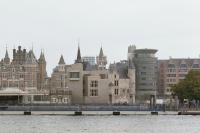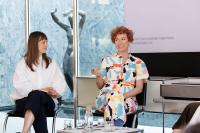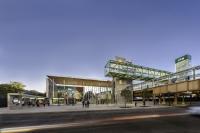The Baddour Center Transitional Homes
The Baddour Center is a 120-acre residential community in Northwest Mississippi that provides the necessary infrastructure to support a full, daily life for adults with intellectual disabilities. The Baddour Center serves individuals across the full spectrum of intellectual disability and autism disorders by providing housing, personal care, vocations, and recreation. The programming at the Center provides opportunities for spiritual, intellectual, social, and emotional growth. Beyond mere services and physical structures, the Baddour Center has created a thriving community in its nearly 40 years of operation.
In support of its mission to be a model residential community for adults with intellectual disabilities, the Baddour Center completed a comprehensive master plan in 2017 for the enrichment of the residents’ quality of life, upgrades to campus appearance, strengthening of the institution’s financial health, and enhancing campus operations. The first project of the Master Plan included the design and construction of two new 3,500 square-foot homes, with five residents each, that employ a transitional model of care. In this model, residents live mostly independently with some daytime support from a Direct Support Professional (DSP). The new transitional homes would be sited near two existing group homes on the south side of campus.
Making responsive housing for residents with intellectual disabilities requires a special understanding of their day-to-day life experience, the stresses they encounter, and how they navigate and engage one another, staff, their families, the campus, and the world. The design work required research and resident engagement to best understand the special requirements of people with multiple types and levels of disability. The design team included staff and resident insight and participation at every level of the project.
The quantitative program for each 3,532 GSF house includes five bedrooms, each with accessible private bathrooms, living, dining, kitchen, a meeting space, half bath, laundry, a direct support staff desk, porch, covered parking for golf carts and bicycles, and an outdoor gathering space common to all the houses.
The design goals were to make a house with low sensory stress and with organizational clarity; that is safe and healthy, allowing staff observation and support without intrusion; that avoids social conflict (dead-end spaces) and promotes choice, allowing residents to preview activities for social interaction or maintain distance and privacy,
These buildings will be the residents’ homes for the rest of their lives. They will occupy the bedrooms for years. The residents wanted the houses to be unique, a home they could be proud of, but they also wanted them to fit in and be part of the community. The houses are environmentally alive and ecologically mature, with residents connected to the site, cycles of the day, weather, and seasons. The buildings are sited to fit into the context but optimized for views and natural light in all rooms. The light chimneys in each bedroom reach up and bring in morning sun. The windows in each bedroom are located near the edge wall which, over the course of the day, is illuminated with all the direct and reflected light and color from outside. The porch offers a cool shaded respite from the sun and screens the direct light into the living areas. The houses are surrounded by gardens with local plant materials.
The new housing is designed to make present the full spectrum of space, from the envelopment of one’s private space to the house community, the porch, the campus, and the community at large.












